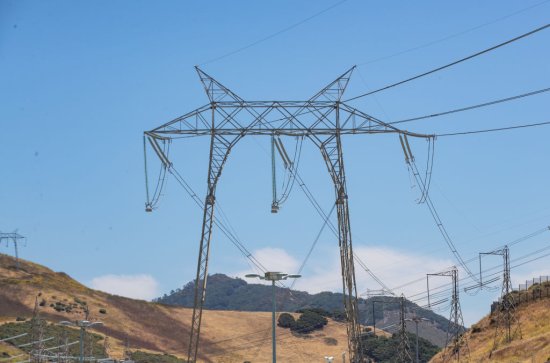
“People don't realize how fragile the grid is."
(To get this story in your inbox, subscribe to the TIME CO2 Leadership Report newsletter here.)
Michael Polsky, the founder and CEO of renewable energy developer Invenergy, has earned a reputation as a renewable energy pioneer. His company, founded in 2001, has more than 200 clean energy projects across the world completed or in progress.
When we spoke this week at this year’s Aspen Ideas: Climate conference, he could have taken a bit of a victory lap. But instead he was eager to deliver a warning: without a concerted effort to fix its electric grid the U.S. may soon face electric reliability issues, not to mention challenges meeting its climate goals. “People don’t realize how fragile the grid is,” he said.
[time-brightcove not-tgx=”true”]Polsky is far from alone. In the year and a half since the passage of the climate-focused Inflation Reduction Act (IRA), energy experts have called for regulatory reforms to help fix the grid—think of expediting permits for transmission lines that deliver electricity from power plants to cities and speeding up the process of connecting new power plants to the grid. A 2022 Princeton University report found that more than 80% of the IRA’s emissions reductions could be lost if transmission expansion doesn’t pick up beyond its recent rate of about 1% annually.
Recent warnings that we need to get the electric grid in order have grown even more dire as a variety of factors have coalesced. To start, the grid has suffered from under-investment for decades and improvements can be hard to permit. At the same time, demand for electricity is growing much faster than expected, in large part driven by data centers and growing electrification of the economy (think of everything from EVs to stoves). Wind and solar energy have created additional challenges. After all, solar only generates power when the sun is shining and turbines only spin when the wind is blowing.
All of this adds up to an urgent picture: the integrity of the entire system is at stake, meaning that it may grow more difficult to keep the lights on consistently. A December report from North American Electric Reliability Corporation warned that huge swathes of the country face elevated or high risk of inadequate electric generation capacity.
Read more: How Our Electric Grids are Blocking a Climate Revolution
Writing about energy and climate change over the past decade, I’ve encountered many climate people who try to avoid talking about challenges with the grid out of fear that doing so might feed into a narrative that renewables aren’t reliable. Others have wanted to avoid the thorny issue of building new infrastructure in people’s backyards and the messy debate about permitting reform. With the grid’s looming issues, it may be time to change that thinking.
A reliable grid is important in its own right. The grid not only keeps our economy running but also protects our health and well-being. There are climate effects, too. Polsky argues that an unreliable grid—driven by a wide variety of factors—could lead to a “backlash” from the public. “My fear is that we have a major issue with the grid and then [people] start finding a scapegoat,” he told me. “What is the scapegoat? Renewables.”
The solution, if it weren’t clear already, is relatively simple: invest in the grid. To do that, though, will require a combination of private sector investment and support from government and regulators.